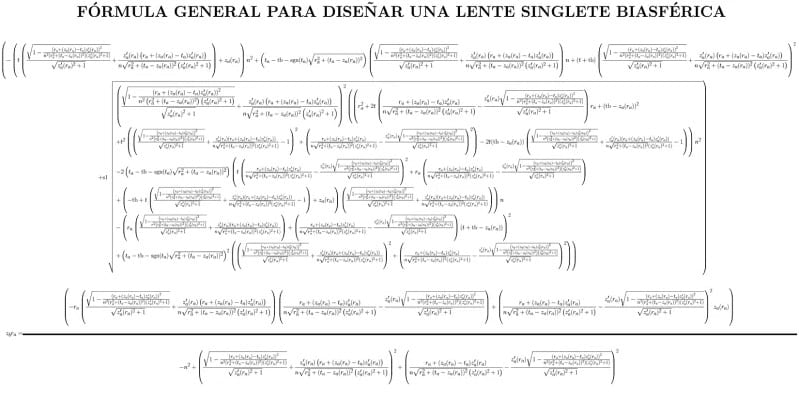This is scary and sad at the same time.
The Okjökull glacier was dead, declared Oddur Sigurðsson, a geologist in the Icelandic Meteorological Office back in 2014.
By then, the glacier had mostly disappeared.
Fast forward five years and Sigurðsson and other scientists are hiking to the old summit to place a plaque commemorating it upon the volcano it once dominated. It is officially the first glacier lost to climate change.
These dramatic satellite images show the tragic change of the glacier between 1986 and 2019.
On August 18, 2019, scientists will be among those who gather for a memorial atop Ok volcano in west-central #Iceland. The deceased being remembered is Okjökull—a once-iconic #glacier that was declared dead in 2014. https://t.co/IbwDha54cB #NASA #Landsat pic.twitter.com/pSFD08UohO
— NASA Earth (@NASAEarth) August 12, 2019
The Okjökull glacier is only one of Iceland’s receding glaciers, many of which are also changing at dramatic rates. According to Sigurðsson, glacier conditions all around the world are on the decline due to the impending climate crisis.
He has been documenting the vanishing of approximately 56 out of the 300ish smaller glaciers in the northern part of Iceland.
Here is the image of the Okjökull glacier in September, 1986.

Photo Credit: NASA Earth Observatory
Here is the image of the glacier taken August, 2019.

Photo Credit: NASA Earth Observatory
Every continent, except for Australia which does not have glaciers, is experiencing the loss of glaciers, some slow, others much quicker.
Alex Gardner, a NASA glaciologist, told Mashable, “We’re not trying to figure out whether the glaciers will melt in the future. We’re just trying to find out how much and how fast.”
Since 2001, 18 of the 19 warmest years on record have occurred. The warm temperatures have thinned the rivers of ice that create the glaciers.

Photo Credit: Vojife
Sigurðsson calculated that in 1890 the Okjökull glacier occupied 16 square kilometers, or 6 square mile. By 1945, it was dwindling, and it eventually died in 2014. Now, only small amounts of snow and ice exist along the slope.
Assuming warming trends continue along with unchanged rates of carbon emissions – which seems to be our trajectory unless something dramatic happens in the global political landscape – Iceland will see a decline in its glaciers of 40 percent by the end of the century.
According to the U.S. Geological Survey, all of Iceland’s ice masses could disappear by 2200, if not sooner.
In the meantime, Sigurðsson is taking on the sad task of tracking all the living glaciers, especially those in retreat.
The post Take a Look at Iceland’s First Dead Glacier Captured in Satellite Images appeared first on UberFacts.


 MBTI High School Stereotypes
MBTI High School Stereotypes
 Also, somebody asked about doing a face reveal. Maybe at 1000 followers? . . . . #mbti #meme #mbtimemes #myersbriggs #16personalities #entp #estp #enfp #esfp #entj #estj #esfj #enfj #intp #istp #infp #isfp #intj #istj #isfj #infj
Also, somebody asked about doing a face reveal. Maybe at 1000 followers? . . . . #mbti #meme #mbtimemes #myersbriggs #16personalities #entp #estp #enfp #esfp #entj #estj #esfj #enfj #intp #istp #infp #isfp #intj #istj #isfj #infj Do you have access to clean drinking water whenever you want? ⠀ ⠀
Do you have access to clean drinking water whenever you want? ⠀ ⠀  Last UNICEF report says: 1 in 3 people globally do not have access to safe drinking water: ⠀
Last UNICEF report says: 1 in 3 people globally do not have access to safe drinking water: ⠀  2.2 billion people around the world do not have safely managed drinking water services ⠀
2.2 billion people around the world do not have safely managed drinking water services ⠀  Next time you think your life sucks remember the above and say thank you for what you have! ⠀ Much love
Next time you think your life sucks remember the above and say thank you for what you have! ⠀ Much love  • • • • • #unicef #un #motivation #appreciate #saythankyou #cleanwater #water #drinkingwater #report #savetheearth #bestlifescenario #travelbloggervibes #africa #children #kids #beirut #baalbek #byblos #lebanon
• • • • • #unicef #un #motivation #appreciate #saythankyou #cleanwater #water #drinkingwater #report #savetheearth #bestlifescenario #travelbloggervibes #africa #children #kids #beirut #baalbek #byblos #lebanon …. It's very helpful for our health…. Try this in your home… It's so easy to make….
…. It's very helpful for our health…. Try this in your home… It's so easy to make….



 x10. #deca #triathlon #swimming #running #cycling #endurance #ultra #longdistanceswimming
x10. #deca #triathlon #swimming #running #cycling #endurance #ultra #longdistanceswimming . > Plain Greek Yogurt > Honey Oat Granola > Strawberries & Banana > Almond Butter Topped With Chia Seeds, Cinnamon & Honey
. > Plain Greek Yogurt > Honey Oat Granola > Strawberries & Banana > Almond Butter Topped With Chia Seeds, Cinnamon & Honey  . . . . #healthybreakfast #morningdrink #morningdrinks #healthyrecipes #healthy #cleaneats #simplerecipes #foodblogger #foodblog #tuesday #food #foodporn #foodie #caffeine #vsg #vsgcommunity #gastricsleeve #yogurtbowl #yogurt #healthyfood #snacks #healthysnacks #lunch #lunchideas #tuesdaymotivation #chiaseeds #fruit #yogurtparfait #breakfast #breakfastideas
. . . . #healthybreakfast #morningdrink #morningdrinks #healthyrecipes #healthy #cleaneats #simplerecipes #foodblogger #foodblog #tuesday #food #foodporn #foodie #caffeine #vsg #vsgcommunity #gastricsleeve #yogurtbowl #yogurt #healthyfood #snacks #healthysnacks #lunch #lunchideas #tuesdaymotivation #chiaseeds #fruit #yogurtparfait #breakfast #breakfastideas

 . Il Leucochloridium paradoxum, è un platelminta parassita della famiglia Succineidae. . Come svolge il suo ciclo? . Il ciclo inizia quando un uccello dell’ordine Passeriformes ingerisce le metacercarie (lo stadio larvale presente nello sporociste) che, una volta giunte nell’intestino, si sviluppano e depongono le uova. . Queste vengono quindi disperse nell’ambiente dall’uccello assieme alle feci. . A questo punto la chiocciola mangia le uova assieme all’erba e agli escrementi e, dopo aver passato il digerente dell’invertebrato, esse si schiudono nel suo intestino. . La fase successiva prevede la migrazione delle larve attraverso il corpo della chiocciola fino all’epatopancreas, la ghiandola più importante dell’apparato digerente della nostra Succineidae, che svolge sia una funzione di assorbimento, sia una funzione di secrezione di enzimi digestivi. Ed è proprio in questa ghiandola che le larve si sviluppano in sporocisti, lo stadio che sarà ingerito dall’uccello. . Ed è in questo passaggio che riscontriamo la particolarità di L. paradoxum: la sporociste, che ha una forma allungata, si colora all’estremità di tinte bianche e verdi a strisce e dall’epatopancreas si sposta nei tentacoli oculari della chiocciola, con una particolare predilezione per il lato sinistro (ancora non è noto il perché) e inizia quindi a “pulsare” (solo di giorno, di notte resta immobile) facendo si che la chiocciola non riesca più a ritrarli. . La presenza dello sporociste nei tentacolari oculari fa si che la chiocciola non riesca più (o comunque fatichi molto) a “vedere” la differenza tra giorno e notte, facendola così vagare per zone molto illuminate anche quando normalmente non lo farebbe. Ed è in questo modo, unito al movimento pulsante e ai colori brillanti, che il parassita si fa notare dagli uccelli e può quindi chiudere il ciclo. . Credits: @microbiologiaitalia , Gilles San Martin . #chiocciola #lumaca #parassita #Leucochloridiumparadoxum #worm #snail #microbiologia #scienza #parassitismo #biologia #natura #verme #parasite #elicicoltura #snailfarming #ilcontadinosmart
. Il Leucochloridium paradoxum, è un platelminta parassita della famiglia Succineidae. . Come svolge il suo ciclo? . Il ciclo inizia quando un uccello dell’ordine Passeriformes ingerisce le metacercarie (lo stadio larvale presente nello sporociste) che, una volta giunte nell’intestino, si sviluppano e depongono le uova. . Queste vengono quindi disperse nell’ambiente dall’uccello assieme alle feci. . A questo punto la chiocciola mangia le uova assieme all’erba e agli escrementi e, dopo aver passato il digerente dell’invertebrato, esse si schiudono nel suo intestino. . La fase successiva prevede la migrazione delle larve attraverso il corpo della chiocciola fino all’epatopancreas, la ghiandola più importante dell’apparato digerente della nostra Succineidae, che svolge sia una funzione di assorbimento, sia una funzione di secrezione di enzimi digestivi. Ed è proprio in questa ghiandola che le larve si sviluppano in sporocisti, lo stadio che sarà ingerito dall’uccello. . Ed è in questo passaggio che riscontriamo la particolarità di L. paradoxum: la sporociste, che ha una forma allungata, si colora all’estremità di tinte bianche e verdi a strisce e dall’epatopancreas si sposta nei tentacoli oculari della chiocciola, con una particolare predilezione per il lato sinistro (ancora non è noto il perché) e inizia quindi a “pulsare” (solo di giorno, di notte resta immobile) facendo si che la chiocciola non riesca più a ritrarli. . La presenza dello sporociste nei tentacolari oculari fa si che la chiocciola non riesca più (o comunque fatichi molto) a “vedere” la differenza tra giorno e notte, facendola così vagare per zone molto illuminate anche quando normalmente non lo farebbe. Ed è in questo modo, unito al movimento pulsante e ai colori brillanti, che il parassita si fa notare dagli uccelli e può quindi chiudere il ciclo. . Credits: @microbiologiaitalia , Gilles San Martin . #chiocciola #lumaca #parassita #Leucochloridiumparadoxum #worm #snail #microbiologia #scienza #parassitismo #biologia #natura #verme #parasite #elicicoltura #snailfarming #ilcontadinosmart

 #улитка #паразит #червь #лейкохлоридийпарадоксальный #биология #природа #макро #snail #parasite #worm #leucochloridiumparadoxum #biology #nature #macro
#улитка #паразит #червь #лейкохлоридийпарадоксальный #биология #природа #макро #snail #parasite #worm #leucochloridiumparadoxum #biology #nature #macro



 Clumsy Unicorn
Clumsy Unicorn 




 #PeoplesVote (@JoanneOcean)
#PeoplesVote (@JoanneOcean) 

 : EPA-EFE
: EPA-EFE

